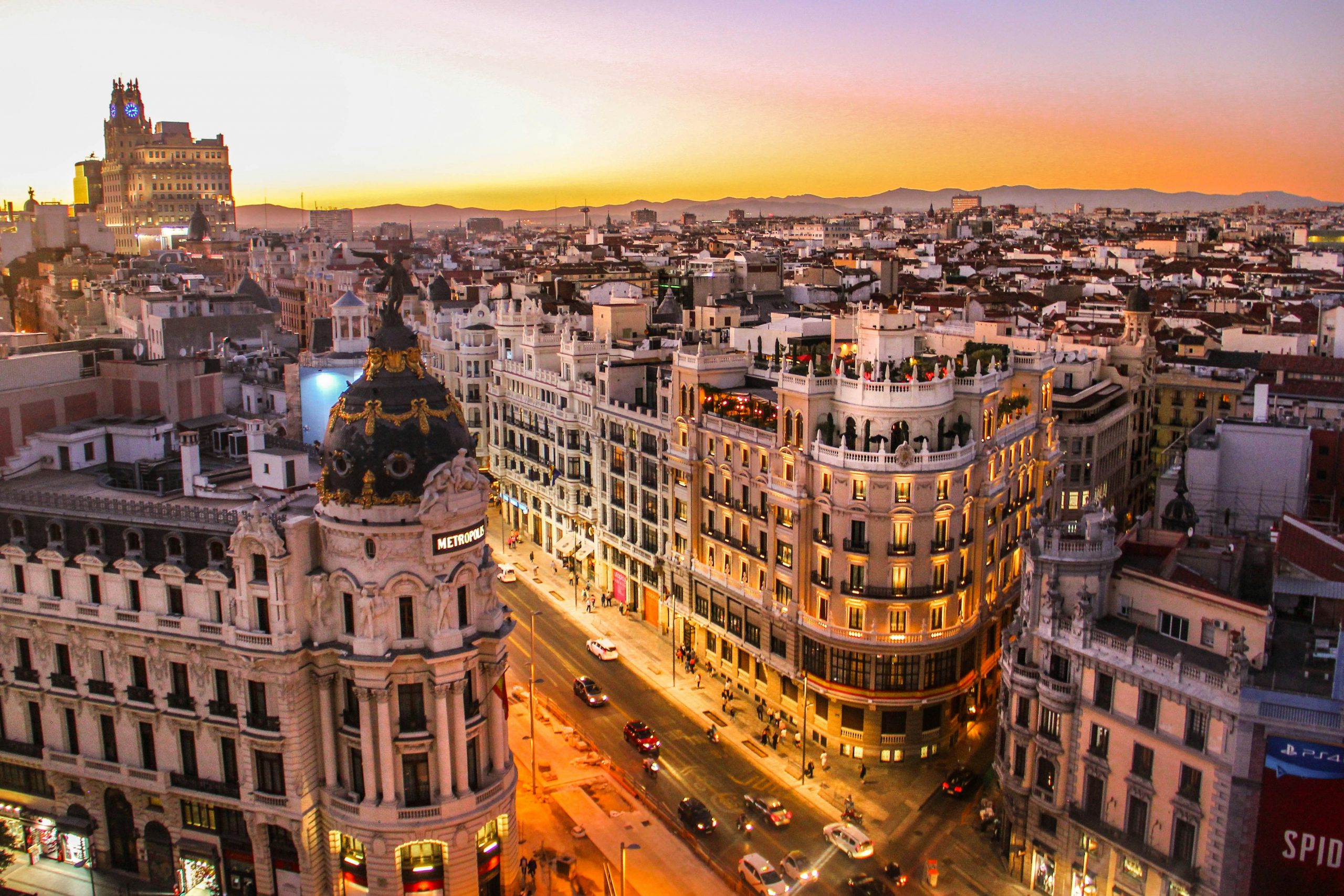✈️ Introduction
Italy has long been a dream destination for travelers. From the historic streets of Rome and Venetian canals, to the Tuscan hills and Amalfi Coast, the country is a cultural and lifestyle powerhouse. But for digital nomads, Italy now offers more than food, wine, and history: it offers a dedicated Digital Nomad Visa.
Approved in March 2022 under Law 25/2022 and officially launched in April 2024, Italy’s Digital Nomad Visa provides a legal pathway for non-EU/EEA/Swiss nationals to live in Italy while working remotely for employers or clients abroad.
Unlike traditional work visas, this program is designed specifically for highly skilled professionals who can support themselves financially and contribute to Italy’s economy while working remotely.
In this guide, you’ll learn everything about the Italy Digital Nomad Visa in 2025:
- Who qualifies & eligibility criteria
- Minimum income requirements
- Step-by-step application process
- Required documents, fees & processing timelines
- Benefits of living in Italy as a digital nomad
- Cost of living & best cities/towns to work remotely
- Family inclusion rules
- Tax implications & healthcare obligations
- Renewal & long-term residency options
- FAQs and expert tips
By the end, you’ll know if Italy should be your next digital nomad base.
👤 Who Qualifies for Italy’s Digital Nomad Visa
The Italy Digital Nomad Visa is designed for non-EU/EEA/Swiss nationals who are highly skilled professionals working remotely.
You may qualify if you:
- Work remotely for a company registered outside Italy.
- Are self-employed or freelance with international clients.
- Can prove you are a highly skilled professional (recognized qualifications, work experience, or special permits).
- Earn enough to support yourself (and family if applicable).
- Have valid health insurance for Italy.
- Have no criminal record.
You are unlikely to qualify if you:
- Intend to work for Italian employers.
- Cannot prove steady income or professional qualifications.
- Lack health insurance or required financial proof.
📋 Eligibility Criteria & Income Requirements (2025)
Italy’s Digital Nomad Visa has stricter eligibility compared to other EU programs, focusing on highly skilled applicants.
Basic Criteria
- Valid Passport: Must cover your stay.
- Remote Work Proof: Employment contract, freelance contracts, or proof of business ownership abroad.
- Highly Skilled Requirement: Evidence such as advanced degree, recognized professional license, or significant work experience.
- Health Insurance: Covering Italy and the Schengen zone.
- Clean Criminal Record: From your home country.
- Accommodation Proof: Lease agreement, property ownership, or hotel booking.
Income Requirement
- Minimum €2,700–€3,000/month net income (exact threshold may vary by region/consulate).
- Savings and proof of ongoing contracts strengthen your application.
Family Members
- You may include spouse and dependent children.
- Income requirement increases by 20% per spouse and 15% per child.
✅ Quick Eligibility Checklist
- Do you earn at least €2,700/month net income?
- Do you work remotely for non-Italian employers/clients?
- Do you have recognized qualifications or professional skills?
- Do you hold valid health insurance for Italy?
- Do you have a clean criminal record?
- Do you have accommodation in Italy?
👉 If yes, you’re a good candidate for Italy’s Digital Nomad Visa.
Application Process, Documents, Fees & Timelines
🛠️ Step-by-Step Application Process
The Italy Digital Nomad Visa is relatively new (officially launched in 2024), and while procedures are still being standardized across consulates, the process follows these general steps:
1. Confirm Eligibility
- Ensure you meet the income requirement (€2,700–€3,000/month).
- Prepare proof of remote employment/freelance work outside Italy.
- Gather evidence of your professional qualifications.
2. Book an Appointment at the Italian Consulate
- Applications must be submitted at an Italian consulate in your country of residence.
- Appointments are often booked online through the consulate’s website.
3. Prepare Your Documents
- Collect all required documents (see checklist below).
- Translate them into Italian (if not already) and get them apostilled/legalized where necessary.
4. Submit Application & Pay Fees
- Attend the appointment in person.
- Submit your application form, biometrics, and required documents.
- Pay the visa fee.
5. Wait for Processing
- Consulate and Italian authorities review your application.
- They may request additional documents or clarifications.
6. Receive Visa & Enter Italy
- If approved, you’ll get a Digital Nomad Visa stamped in your passport.
- Upon arrival in Italy, you must apply for a Permesso di Soggiorno (residence permit) at the local Questura (police immigration office) within 8 days.
📄 Required Documents Checklist (2025)
Here’s the typical set of documents required for the Italy Digital Nomad Visa:
✅ Valid Passport – Minimum 12 months validity, with blank pages.
✅ Visa Application Form – Completed and signed.
✅ Recent Passport Photos – Biometric format.
✅ Proof of Remote Work – Employment contract, freelance agreements, or business ownership proof showing clients outside Italy.
✅ Proof of Professional Skills – Degree, professional license, or portfolio of work.
✅ Proof of Income – Bank statements, contracts, or invoices proving at least €2,700–€3,000/month.
✅ Health Insurance – International/private plan covering Italy for the visa duration.
✅ Criminal Record Certificate – From your home country (not older than 3 months).
✅ Accommodation Proof – Rental lease, hotel booking, or property deed in Italy.
✅ Marriage & Birth Certificates – If applying with family (apostilled + translated).
✅ Cover Letter – Explaining your intention, professional background, and plans in Italy.
✅ Visa Fee Payment Receipt.
👉 Pro Tip: Italy is detail-oriented. Submitting a complete, professional application file with translations significantly improves your approval chances.
💶 Fees & Costs
- Visa Application Fee: ~€116 (standard national visa fee).
- Residence Permit (Permesso di Soggiorno): €40–€100 depending on type and duration.
- Administrative Fees (Revenue Stamps, Postal Kit, etc.): ~€30–€50.
- Translations & Apostilles: €20–€50 per page.
- Health Insurance: €50–€200/month.
👉 Total upfront cost: €250–€500 (excluding monthly insurance).
⏱️ Processing Times
- Consulate Applications: 1–3 months depending on workload.
- Residence Permit in Italy: 2–3 months after arrival.
- Biometric ID Card (Permesso di Soggiorno): 2–4 weeks after approval.
👉 Average total process: 2–4 months from application to residence permit in hand.
📝 Quick Application Summary
- ✅ Confirm eligibility (€2,700–€3,000/month net income + professional qualifications).
- ✅ Book an appointment at the Italian consulate in your home country.
- ✅ Prepare documents (translated + apostilled if necessary).
- ✅ Submit visa application + biometrics + fees.
- ✅ Wait 1–3 months for approval.
- ✅ Enter Italy and apply for a Permesso di Soggiorno within 8 days.
- ✅ Receive your residence permit card and enjoy life in Italy as a digital nomad.
Benefits, Cost of Living & Best Cities for Digital Nomads
🎉 Benefits of the Italy Digital Nomad Visa
Italy’s program stands out for combining lifestyle appeal with practical advantages.
1. Legal Stay in Italy While Working Remotely
- Live in Italy for up to 1 year, renewable via a residence permit.
- No need to worry about Schengen’s 90/180-day rule.
2. Pathway to Long-Term Residency
- After the initial visa, applying for a Permesso di Soggiorno opens the door to renewals.
- Long-term residency possible after 5 years of continuous stay.
3. Family-Friendly Visa
- Spouse and dependent children can join.
- They get the same length of stay as the main applicant.
4. EU & Schengen Zone Access
- Visa holders can travel freely across 26 Schengen countries.
5. Tax Incentives for Nomads & Expats
- Italy offers special tax breaks for foreigners relocating under certain schemes.
- Some digital nomads may qualify for 70% tax exemption on income earned abroad if they register as residents (depending on case).
6. Italian Lifestyle & Culture
- Enjoy Italy’s world-famous cuisine, wine, art, and history.
- Mediterranean climate with mild winters and warm summers.
- Balance of bustling cities and tranquil countryside.
💸 Cost of Living in Italy (2025)
Italy’s cost of living varies significantly by region: Rome, Milan, and Florence are expensive, while southern regions and smaller towns are more affordable.
🏠 Housing
- Rome: €1,000–€1,800/month (1-bedroom city center).
- Milan: €1,200–€2,000/month (most expensive city).
- Florence: €900–€1,500/month.
- Naples: €600–€1,000/month.
- Southern Italy & rural towns: €400–€800/month.
🍴 Food & Dining
- Groceries: €250–€400/month per person.
- Pizza/pasta meal at a trattoria: €8–€15.
- Mid-range restaurant (3 courses): €25–€40 per person.
- Espresso: €1–€1.50 (standing at the bar).
🚇 Transportation
- Rome/Milan monthly metro pass: €35–€50.
- Regional trains: €10–€30 depending on distance.
- High-speed trains (Rome–Milan): €40–€90 (with discounts if booked early).
- Gasoline: ~€1.90/litre.
💻 Coworking Spaces
- Rome: €150–€300/month.
- Milan: €200–€350/month.
- Florence: €120–€200/month.
- Naples: €80–€150/month.
- Smaller towns: €50–€120/month.
👉 Average Monthly Budget for a Digital Nomad in Italy:
- Frugal lifestyle: €1,500–€1,800.
- Comfortable lifestyle: €2,500–€3,000.
- Family lifestyle: €4,000–€6,000.
🏙️ Best Cities & Towns for Digital Nomads in Italy
1. Rome – The Eternal City
- Best for: History, culture, and networking.
- Pros: Vibrant coworking scene, international community.
- Cons: Expensive housing, traffic congestion.
2. Milan – Business & Fashion Capital
- Best for: Professionals seeking a modern hub.
- Pros: Great infrastructure, fast internet, strong business scene.
- Cons: High rent, fast-paced lifestyle.
3. Florence – Renaissance Beauty
- Best for: Art lovers and slower pace.
- Pros: Stunning architecture, cultural heritage.
- Cons: Tourist-heavy, mid-range costs.
4. Naples – Affordable & Authentic
- Best for: Foodies and budget nomads.
- Pros: Low cost of living, authentic Italian life, great pizza.
- Cons: Less polished infrastructure, chaotic traffic.
5. Bologna – University & Startup Scene
- Best for: Students, freelancers, and young entrepreneurs.
- Pros: Large student population, affordable food, central location.
- Cons: Smaller international community compared to Rome/Milan.
6. Southern Italy (Puglia, Calabria, Sicily)
- Best for: Slow living, beach lifestyle.
- Pros: Cheap rents, amazing beaches, traditional lifestyle.
- Cons: Fewer coworking spaces, slower internet in some areas.
7. Small Towns (Tuscany, Umbria, Marche)
- Best for: Tranquility and countryside living.
- Pros: Scenic landscapes, affordable housing.
- Cons: Limited infrastructure for nomads.
🌤️ Climate & Lifestyle
- North Italy (Milan, Turin, Venice): Cold winters (0–5°C), warm summers (25–30°C).
- Central Italy (Rome, Florence, Bologna): Mild winters (5–10°C), hot summers (30–35°C).
- South Italy & Islands (Naples, Sicily, Sardinia): Warm year-round, summers up to 38°C.
Lifestyle highlights:
- Outdoor cafés, piazzas, markets, festivals.
- Access to beaches, mountains, and vineyards.
- Work-life balance is more relaxed than Northern Europe.
👉 Italy offers a blend of modern lifestyle + cultural richness, making it a dream base for digital nomads.
Family Inclusion, Taxes & Pros and Cons
👨👩👧 Family Inclusion
Italy’s Digital Nomad Visa is family-friendly, making it attractive for professionals who don’t want to move alone.
Who Can Join You?
- Spouse or registered partner
- Children under 18 (or dependent adult children if in education)
Requirements for Family Members
- Your income threshold increases by:
- +20% (€540–€600) for spouse/partner
- +15% (€400–€450) for each child
- You must provide:
- Marriage certificate / proof of partnership (apostilled + translated into Italian)
- Birth certificates of children (apostilled + translated)
- Health insurance covering all family members
- Family members must also have no criminal record.
Benefits for Family Members
- They get the same visa/residence duration as the main applicant.
- Children can attend public schools (free) or private/international schools (paid).
- Spouse may apply for a residence permit and in some cases may be allowed to work in Italy.
🏦 Taxes for Digital Nomads in Italy
Taxes are a crucial consideration for nomads planning to stay long-term.
Tax Residency Rules
- You are considered a tax resident in Italy if you:
- Spend 183+ days in Italy in a calendar year, OR
- Have your center of life interests in Italy (family, business, permanent home).
Tax Implications
- As a tax resident, you must declare worldwide income.
- Italy’s progressive tax rates range from 23% to 43%.
- Regional and municipal surcharges may apply (1–3%).
Tax Incentives for Foreign Workers
- Italy has introduced special regimes to attract talent:
- 70%–90% income tax exemption for qualifying foreign workers relocating to Italy (applies up to 5 years, extendable).
- Reduced taxes for highly skilled professionals in certain regions (Southern Italy offers more generous breaks).
👉 Many nomads use this to cut their tax bill significantly while living in Italy. Consulting a commercialista (Italian tax consultant) is highly recommended.
🛡️ Health Insurance Requirements
Health insurance is mandatory to obtain and maintain your visa.
Options for Digital Nomads
- Private International Insurance – Most common for the visa stage.
- Italian National Health Service (Servizio Sanitario Nazionale – SSN) – Available once you register in Italy, with contributions.
- Local Private Insurance – Supplementary, covers faster access to doctors and hospitals.
Key Points
- Must cover all medical emergencies in Italy.
- Must remain valid for the entire duration of your visa/residence permit.
- Family dependents must also be insured.
✅ Pros of Italy’s Digital Nomad Visa
- Access to Italy + Schengen Zone – Live in Italy, travel across Europe freely.
- Family Inclusion – Spouse and kids can join easily.
- Tax Incentives – 70–90% tax exemption for foreign workers in some cases.
- Cultural Lifestyle – World-class food, wine, art, and architecture.
- Long-Term Pathway – Can lead to permanent residency after 5 years, citizenship after 10.
- Diverse Living Options – From cosmopolitan cities to slow rural towns.
- Strong Infrastructure – Internet, coworking spaces, transport in major cities.
⚠️ Cons of Italy’s Digital Nomad Visa
- Bureaucracy – Italian administration is notoriously slow and paperwork-heavy.
- Income Threshold – €2,700–€3,000/month may be high for some freelancers.
- Regional Variations – Processing and requirements differ between consulates.
- High Taxes – Without incentives, Italy has some of the highest tax rates in Europe.
- Cost of Living in Cities – Milan, Rome, Florence can be expensive.
- Language Barrier – English is common in tourist hubs, less so in rural areas.
- Healthcare Wait Times – Public system is good but often overcrowded.
Renewal, Long-Term Residency, FAQs & Conclusion
🔄 Renewal & Extension Options
The Italy Digital Nomad Visa provides flexibility for remote workers who want to stay beyond the initial year.
- Visa validity: 1 year.
- Residence Permit (Permesso di Soggiorno): Once in Italy, you must apply for this permit. It typically matches your visa duration but is renewable.
- Renewal: Can be extended in 1–2 year increments, provided you still meet:
- Income threshold (€2,700–€3,000/month net + dependents)
- Proof of remote employment/freelance work abroad
- Valid health insurance
- Clean criminal record
👉 After 5 years of continuous residence, you may apply for permanent residency (Permesso di Soggiorno UE per soggiornanti di lungo periodo).
🏛️ Pathway to Permanent Residency & Citizenship
One of the biggest advantages of Italy’s program is its long-term potential.
- Permanent Residency: After 5 years of continuous legal residence.
- Citizenship: After 10 years of residence (reduced to 3 years for those with Italian ancestry or 2 years if married to an Italian citizen).
- Requirements include:
- Integration (Italian language proficiency – usually B1 level)
- Financial stability
- Clean legal record
❓ FAQs About Italy’s Digital Nomad Visa (2025)
1. How long is the Italy Digital Nomad Visa valid?
Initially 1 year, with the option to extend via a residence permit.
2. What’s the income requirement?
At least €2,700–€3,000/month net income, with increases for spouse (+20%) and each child (+15%).
3. Can I bring my family?
Yes, spouse and dependent children can join if you meet the higher income threshold.
4. Do I pay taxes in Italy?
- If you spend more than 183 days per year in Italy, you’re considered a tax resident.
- Progressive tax rates (23–43%) apply, but expat tax regimes offer 70–90% tax exemptions for up to 5 years.
5. Can I work for Italian companies?
No, the visa is only for remote work with employers/clients abroad.
6. How long does the application take?
Consulate processing: 1–3 months.
Residence permit processing in Italy: 2–3 months.
7. Can I apply inside Italy?
No. You must apply at an Italian consulate/embassy abroad.
8. Does time on this visa count toward permanent residency?
Yes. Years spent with a residence permit under this visa count toward the 5-year permanent residency requirement.
9. Do I need health insurance?
Yes, valid coverage is required for the entire duration of your visa/residence.
10. Is English widely spoken?
Yes in big cities (Rome, Milan, Florence, Venice), less so in rural areas. Some Italian language skills will help with integration.
🌟 Conclusion
The Italy Digital Nomad Visa is one of Europe’s most appealing programs in 2025, offering both lifestyle and long-term opportunities.
Why It’s Attractive
✅ 1-year visa with renewable residence permit
✅ Family-friendly (spouse & children included)
✅ EU & Schengen access
✅ Strong tax incentives (up to 70–90% exemption for 5 years)
✅ Pathway to permanent residency after 5 years and citizenship after 10 years
✅ Italian lifestyle – culture, cuisine, climate, and history
Challenges to Consider
⚠️ Bureaucracy and slow processes
⚠️ Relatively high income requirement (€2,700–€3,000/month)
⚠️ Regional variations in rules across consulates
⚠️ High taxes if not enrolled in incentive schemes
⚠️ Cost of living in Rome, Milan, Florence is high
Who Should Choose Italy?
- Professionals with steady high income who want long-term EU residency.
- Families looking for culture, education, and Mediterranean lifestyle.
- Remote workers who value history, art, and food alongside strong EU mobility.
- Nomads planning long-term settlement, not just a short stay.
👉 If you have stable remote income and want both lifestyle luxury and a long-term EU future, Italy in 2025 is one of the best choices.



